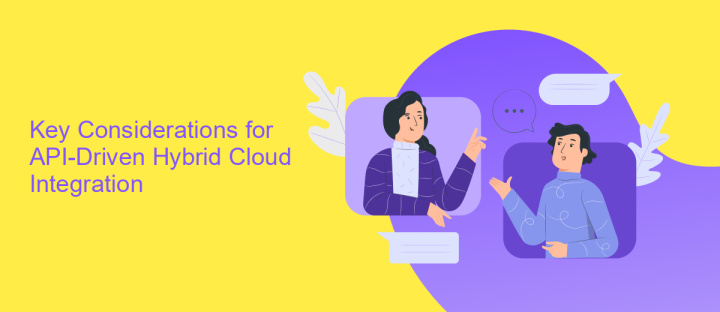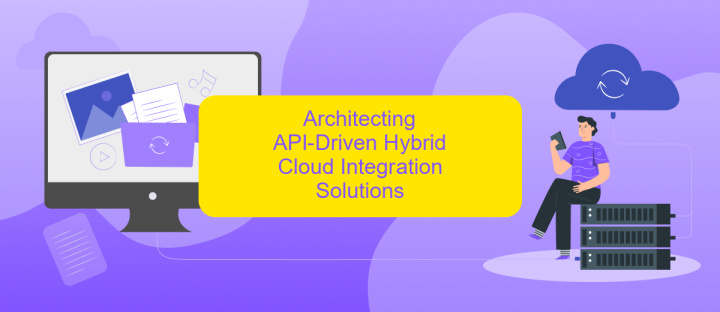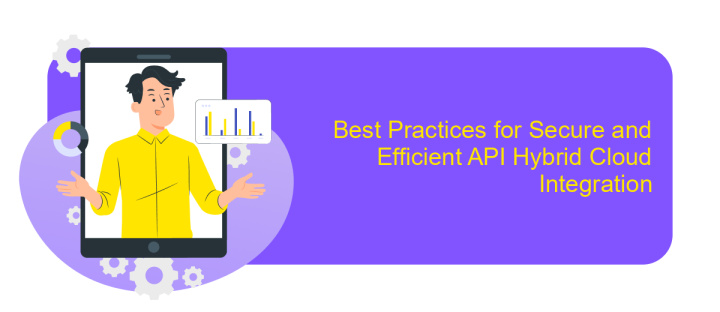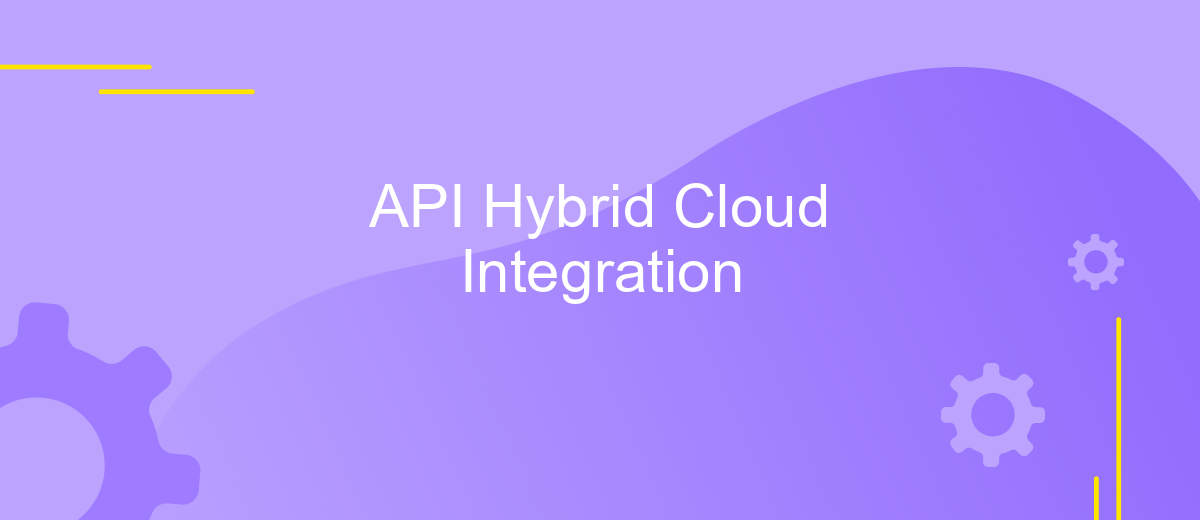API Hybrid Cloud Integration
In today's rapidly evolving digital landscape, businesses are increasingly turning to hybrid cloud solutions to optimize their operations. API Hybrid Cloud Integration plays a pivotal role in seamlessly connecting disparate cloud environments, enabling efficient data exchange and enhancing application interoperability. By leveraging APIs, organizations can unlock the full potential of hybrid clouds, ensuring scalability, flexibility, and improved performance while maintaining robust security and compliance standards.
Understanding Hybrid Cloud Integration and its Benefits
Hybrid cloud integration is a strategic approach that combines private and public cloud services, allowing businesses to leverage the best of both worlds. This integration facilitates seamless data flow and application interoperability across different cloud environments, enhancing flexibility and scalability. By unifying disparate systems, organizations can optimize their IT infrastructure, reduce costs, and improve operational efficiency.
- Flexibility: Easily scale resources up or down based on demand without overcommitting to one cloud model.
- Cost Efficiency: Optimize IT spending by utilizing public cloud resources for non-sensitive workloads while keeping critical data in a private cloud.
- Enhanced Security: Maintain control over sensitive information with private cloud solutions while benefiting from the robust security measures of public clouds.
- Improved Performance: Distribute workloads across multiple environments to improve performance and reduce latency.
Understanding and implementing hybrid cloud integration allows businesses to become more agile and responsive to market changes. By harnessing the strengths of both private and public clouds, organizations can innovate faster, deliver better customer experiences, and maintain a competitive edge in the digital landscape.
Key Considerations for API-Driven Hybrid Cloud Integration

When embarking on API-driven hybrid cloud integration, it's crucial to assess the compatibility of different cloud environments. Organizations must ensure that APIs are designed to work seamlessly across both public and private clouds, facilitating smooth data exchange and application interoperability. Security is another key consideration; robust authentication and authorization protocols must be implemented to protect sensitive data as it traverses diverse cloud infrastructures.
Additionally, the choice of integration tools can significantly impact the efficiency of the integration process. Tools like ApiX-Drive offer flexible solutions for automating data flows and synchronizing applications across hybrid environments. By leveraging such platforms, businesses can reduce the complexity of managing multiple APIs and focus on enhancing their cloud strategies. It's also important to establish clear governance policies to manage API usage and monitor performance, ensuring that the integration aligns with the organization's overall IT goals and compliance requirements.
Architecting API-Driven Hybrid Cloud Integration Solutions

Designing API-driven hybrid cloud integration solutions requires a strategic approach to seamlessly connect on-premises and cloud environments. It involves understanding the unique requirements of both infrastructures and leveraging APIs to create a cohesive system. The architecture must ensure data consistency, security, and scalability while facilitating smooth communication between disparate systems.
- Identify and assess existing systems and applications to determine integration needs and capabilities.
- Design a robust API strategy that includes authentication, authorization, and data encryption to ensure secure interactions.
- Implement API gateways to manage traffic, monitor performance, and enforce policies across hybrid environments.
- Utilize microservices architecture to enhance flexibility and scalability, allowing independent deployment and management of services.
- Continuously monitor and optimize the integration solution to address evolving business requirements and technological advancements.
Effective API-driven integration in a hybrid cloud environment enhances operational efficiency and agility. By leveraging APIs, organizations can achieve seamless interoperability, enabling real-time data exchange and collaboration across platforms. This approach not only simplifies the integration process but also future-proofs the infrastructure, allowing businesses to adapt to changing demands and technological advancements with ease.
Best Practices for Secure and Efficient API Hybrid Cloud Integration

Integrating APIs in a hybrid cloud environment presents unique challenges, requiring a focus on security and efficiency. To ensure seamless operations, organizations must adopt robust practices that address potential vulnerabilities and optimize performance. A well-structured approach can significantly enhance the reliability and scalability of cloud services.
Firstly, it is crucial to implement strong authentication and authorization mechanisms. This helps protect sensitive data and ensures that only authorized users can access the APIs. Additionally, using encryption for data in transit and at rest is essential to safeguard information from unauthorized access or breaches.
- Regularly update and patch API components to address security vulnerabilities.
- Utilize API gateways to manage and monitor traffic effectively.
- Implement rate limiting to prevent abuse and ensure fair resource allocation.
- Conduct regular security audits and penetration testing.
By adhering to these best practices, organizations can achieve a secure and efficient API hybrid cloud integration. This not only minimizes risks but also enhances the overall performance and reliability of cloud services, enabling businesses to leverage the full potential of their hybrid cloud infrastructure.


Future Trends and Challenges in Hybrid Cloud API Integration
As organizations increasingly adopt hybrid cloud environments, the demand for seamless API integration continues to grow. Future trends in hybrid cloud API integration point towards more sophisticated automation and AI-driven solutions that enhance interoperability between disparate systems. The focus will be on developing APIs that are more adaptive and capable of handling dynamic workloads, ensuring that data flows smoothly across both on-premises and cloud-based infrastructures. Additionally, security will remain a top priority, with APIs needing to incorporate advanced encryption and authentication mechanisms to protect sensitive data as it traverses complex hybrid networks.
Despite these advancements, challenges persist in the realm of hybrid cloud API integration. Managing the complexity of multiple APIs across different platforms can be daunting. Tools like ApiX-Drive are emerging as valuable solutions, offering user-friendly interfaces to streamline the integration process. These services help businesses configure integrations without extensive coding, simplifying the deployment and management of APIs. However, organizations must remain vigilant about potential vendor lock-in and ensure their integration strategies are flexible enough to adapt to evolving technological landscapes. As hybrid cloud environments continue to evolve, the ability to effectively manage and integrate APIs will be crucial for maintaining competitive advantage.
FAQ
What is Hybrid Cloud Integration in the context of APIs?
Why is API integration important for Hybrid Cloud environments?
How can businesses automate API integrations in Hybrid Cloud settings?
What are the key challenges in Hybrid Cloud API Integration?
How can businesses ensure secure API integration in Hybrid Cloud environments?
Do you want to achieve your goals in business, career and life faster and better? Do it with ApiX-Drive – a tool that will remove a significant part of the routine from workflows and free up additional time to achieve your goals. Test the capabilities of Apix-Drive for free – see for yourself the effectiveness of the tool.

